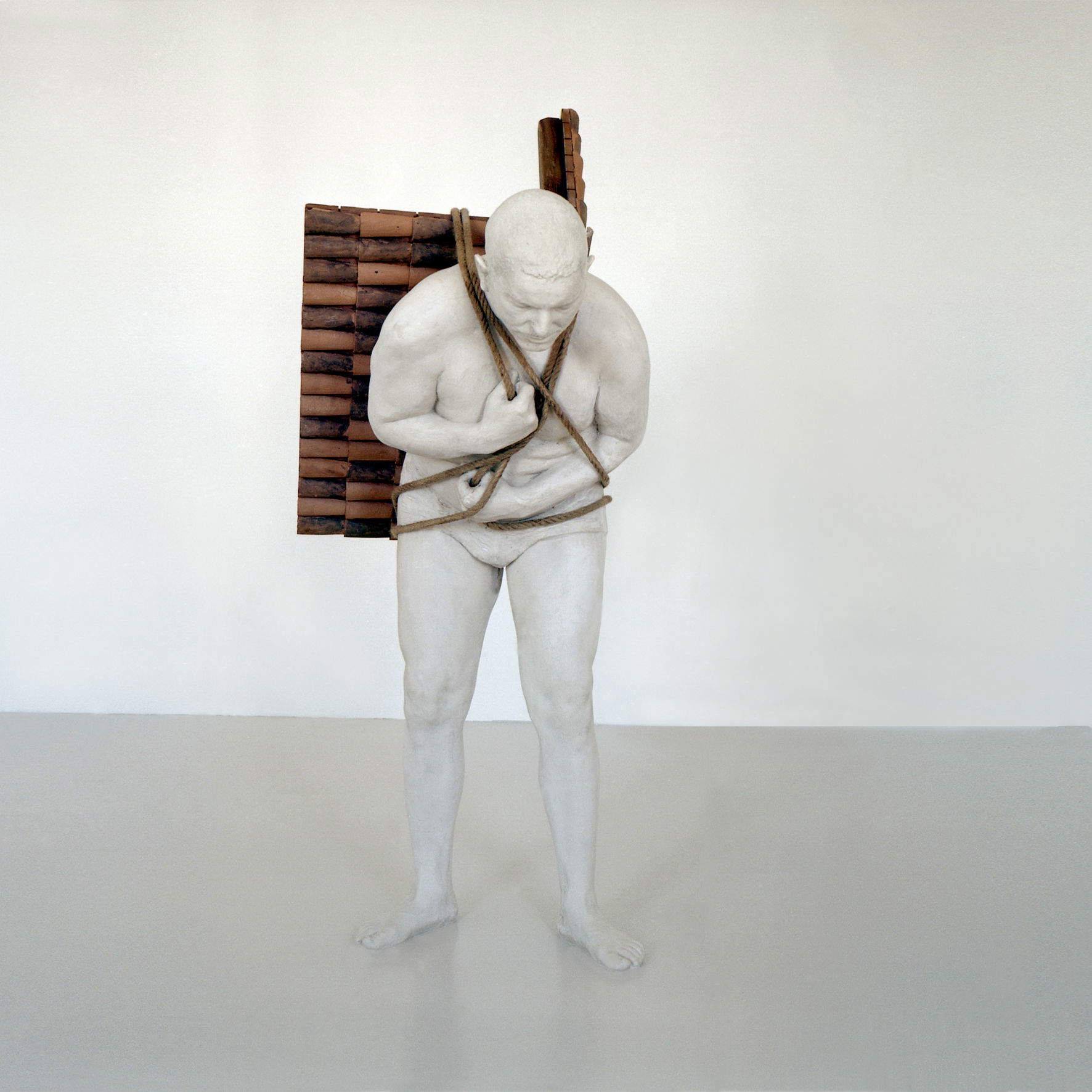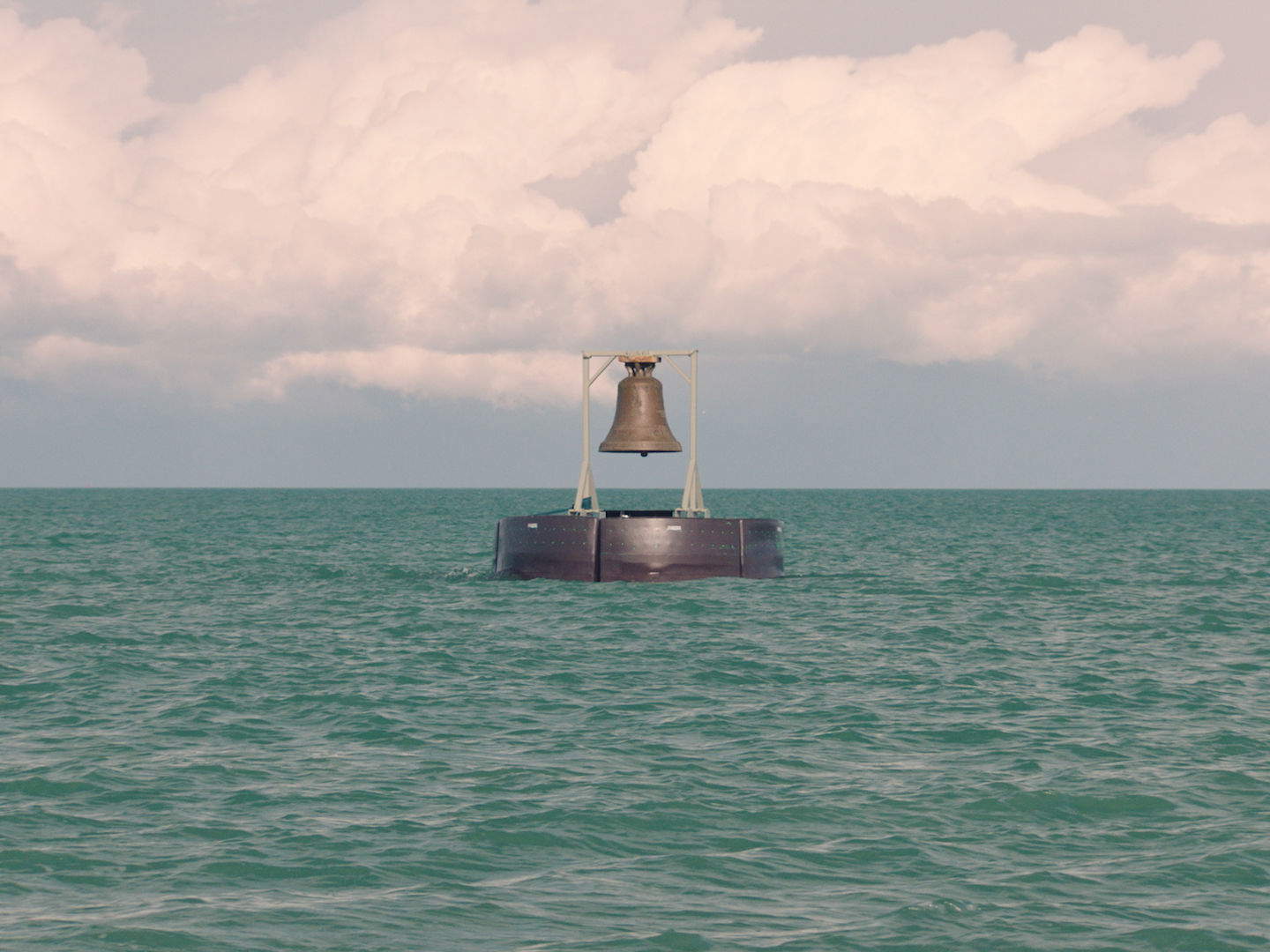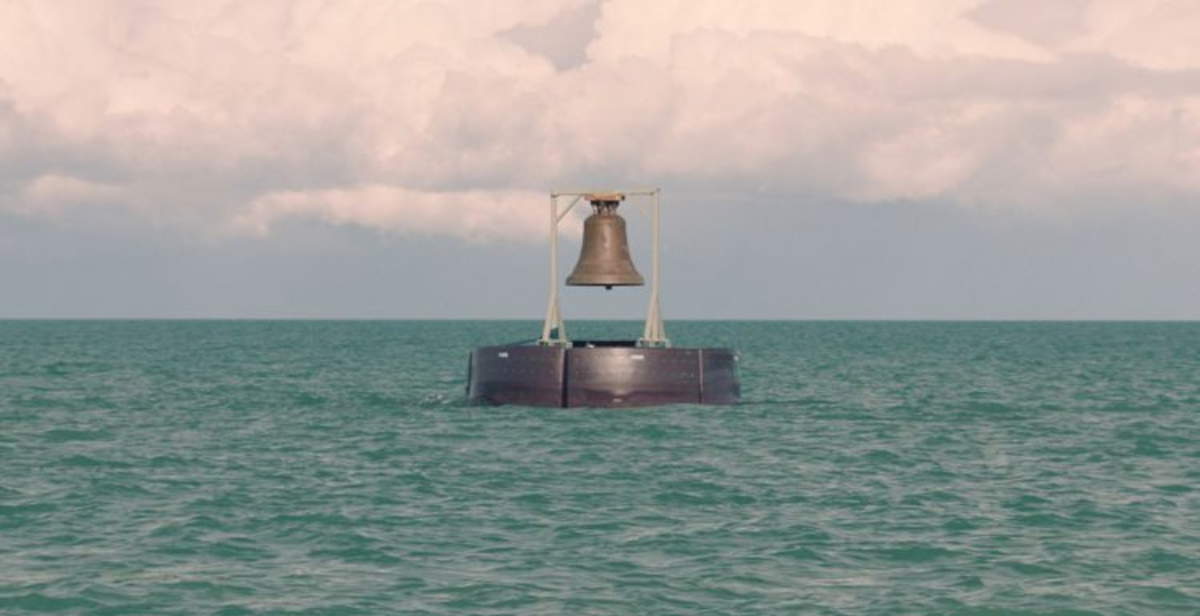On June 11, 2025, the second appointment of Conciliazione 5, a contemporary art project promoted by the Holy See’s Dicastery for Culture and Education on the occasion of the Jubilee, opened in Rome, entrusted for the first year to the curatorship of Cristiana Perrella. After the intervention of Chinese artist Yan Pei-Ming (Shanghai, 1960), who reflected on the theme of prison, it is the turn of Albanian Adrian Paci (Shkodra, 1969), with a solo exhibition entitled No Man is an Island, an exploration of the themes of migration, travel and welcome. Paci, known for a visual language that interweaves personal experiences and symbolic references, presents two works in dialogue with each other: a sculpture placed in the window gallery on Via della Conciliazione, visible 24 hours a day, and a video installation set up inside the Sistine Lanes of the Complesso Monumentale di Santo Spirito in Sassia, now part of ASL Roma 1.
At the heart of the project, conceived for Jubilee 2025, is the desire to develop a reflection around hope through four artistic interventions that will take place over the course of the year. Each artist is called upon to confront themes of strong topicality and social impact (prison, migration, environment, poverty) and to create a work for the permanent space of Conciliazione 5, accompanied by another site-specific intervention in a place in the city related to the theme. Thus a widespread program is built, extending the presence of contemporary art outside the Vatican perimeter. With Home to Go, created in 2001 and now repurposed in the space facing Via della Conciliazione, Adrian Paci offers a symbolic representation of forced travel andnomadic identity. The sculpture shows a male figure, a cast of the artist himself, carrying on his shoulders an upside-down roof, an element that recalls the image of a disused architecture, but also, in shape, that of a pair of wings. The result is a figure suspended between fatigue and momentum, between weight and transcendence. The work thus becomes emblematic of the condition of the migrant, of the wayfarer man, forced to leave his homeland but in search of a place where he can rebuild himself. The link with Christian iconography is evident: there is no lack of references to the Passion, already recurring in Paci’s production, as in the work Cappella Pasolini (2005) or in the Via Crucis made in 2011 for the church of San Bartolomeo in Milan. In this new context, Home to Go finds an additional level of meaning, being placed along the path leading to St. Peter’s and the Holy Door, in an implicit dialogue with the sacredness of the place and the tradition of religious art.


The second intervention, The bell tolls upon the waves, is a new video installation housed in the Sistine Lanes of the Monumental Complex of Santo Spirito in Sassia. The work stems from a historical episode that actually happened in 1566 in Termoli, during a Turkish attack. Looters attempted to steal the Bell of Santa Caterina, used to signal danger to sailors. The attempt failed when the bell, which was too heavy, sank the boat on which it was loaded. From this tale, Paci imagined that the bell had resurfaced from the seabed to return to fulfill its function. He made a new bell, placed on a floating platform in the sea in front of Termoli. Its chimes are not produced by a clapper, but generated by wave motion, in an alternation of gentle or violent sounds, depending on sea conditions. The video documents this installation, transforming an evocative gesture into a symbolic narrative about the relationship between memory, loss and resistance. The bell tolls upon the waves is presented for the first time in Italy, precisely in a place marked by centuries of reception. The Sistine Lanes, part of the Hospital of Santo Spirito in Sassia, traces its roots back to 727 A.D., when the Saxon king Ina founded the Schola Saxonum for pilgrims headed to the Tomb of St. Peter. The choice of the site reinforces the link between the work and the themes of the project: the sea as a space of salvation and danger, the bell as a signal of alarm and memory, and the city as a place of landing and welcome.
The title of the exhibition, No Man is an Island, takes a famous line from English poet John Donne’s Meditation XVII within Devotions Upon Emergent Occasions (1624). The passage-“No man is an island, entire of itself; every man is a piece of the continent, a part of the main (...) any man’s death diminishes me, because I am involved in mankind, and therefore never send to know for whom the bell tolls; it tolls for thee”-invites recognition of the common belonging among human beings and the collective responsibility that comes with it. A reflection that runs through the entire project, built around the theme of hope and conceived as an artistic and spiritual contribution to the Jubilee.
The juxtaposition between one of the artist’s best-known works Home to Go, which in the early 2000s helped make him internationally known, and a new production such as The bell tolls upon the waves underscores the consistency of his research. Adrian Paci continues to move between personal experience and public reflection, in a visual narrative that links the condition of the individual to collective dynamics. His works speak of identity in transit, spirituality, resilience and responsibility, without ever slipping into rhetoric or sentimentality. The Reconciliation 5 project will continue in the fall with interventions by two more international artists, called to confront the other key themes identified for 2025: environment and poverty. The direction remains clear, as stated by Cardinal José Tolentino de Mendonça, Prefect of the promoting Dicastery: a space open to spirituality, but also to critical thinking and the transformative power of art.
 |
| Rome, Adrian Paci recounts Jubilee migration with "No Man is an Island" |
Warning: the translation into English of the original Italian article was created using automatic tools. We undertake to review all articles, but we do not guarantee the total absence of inaccuracies in the translation due to the program. You can find the original by clicking on the ITA button. If you find any mistake,please contact us.